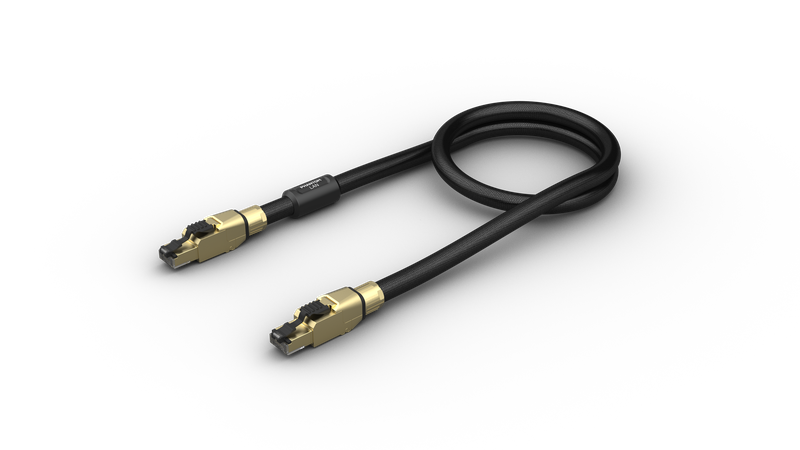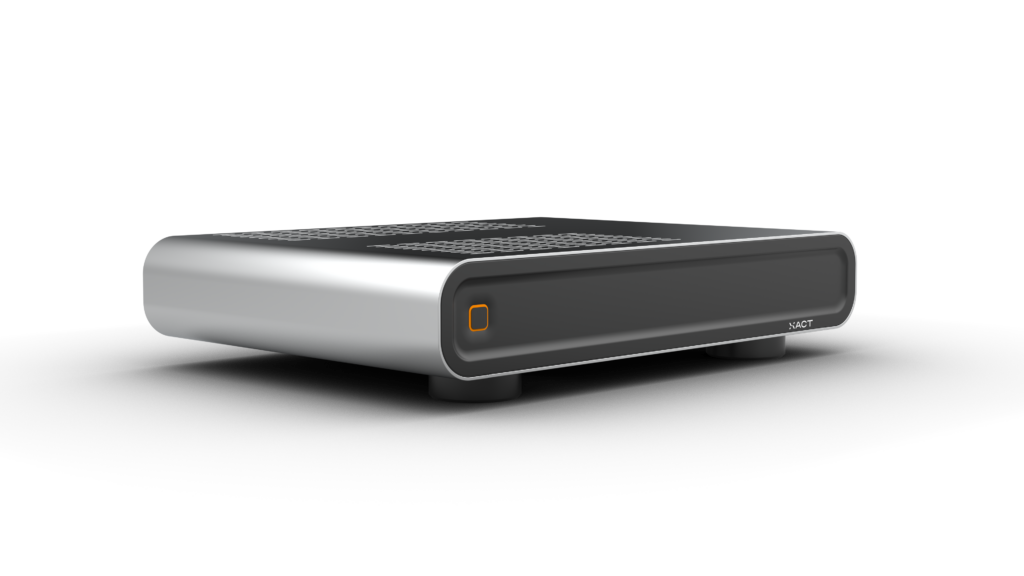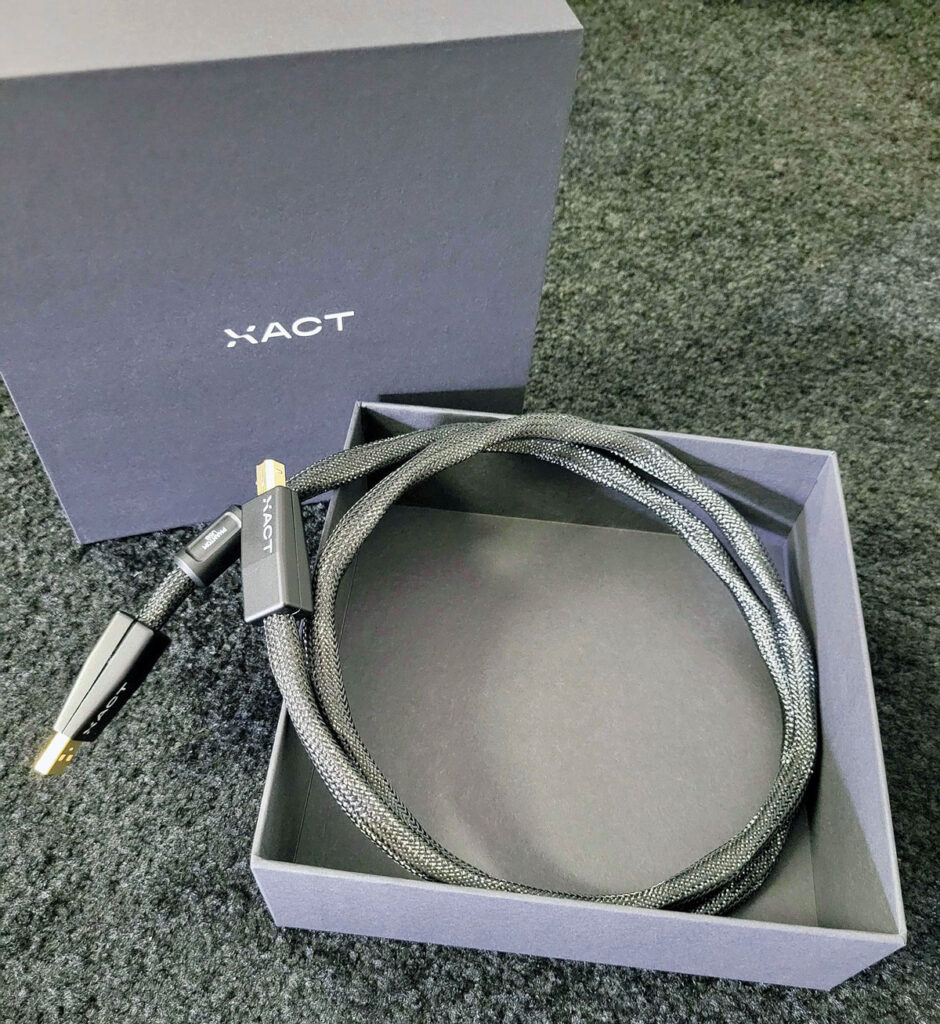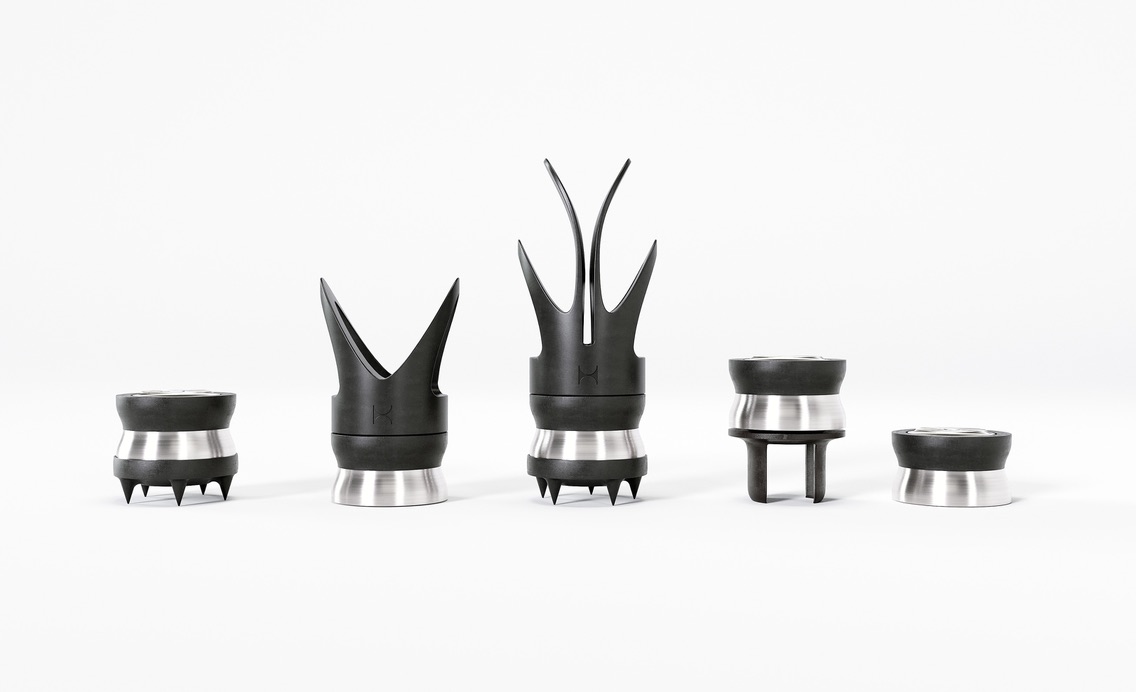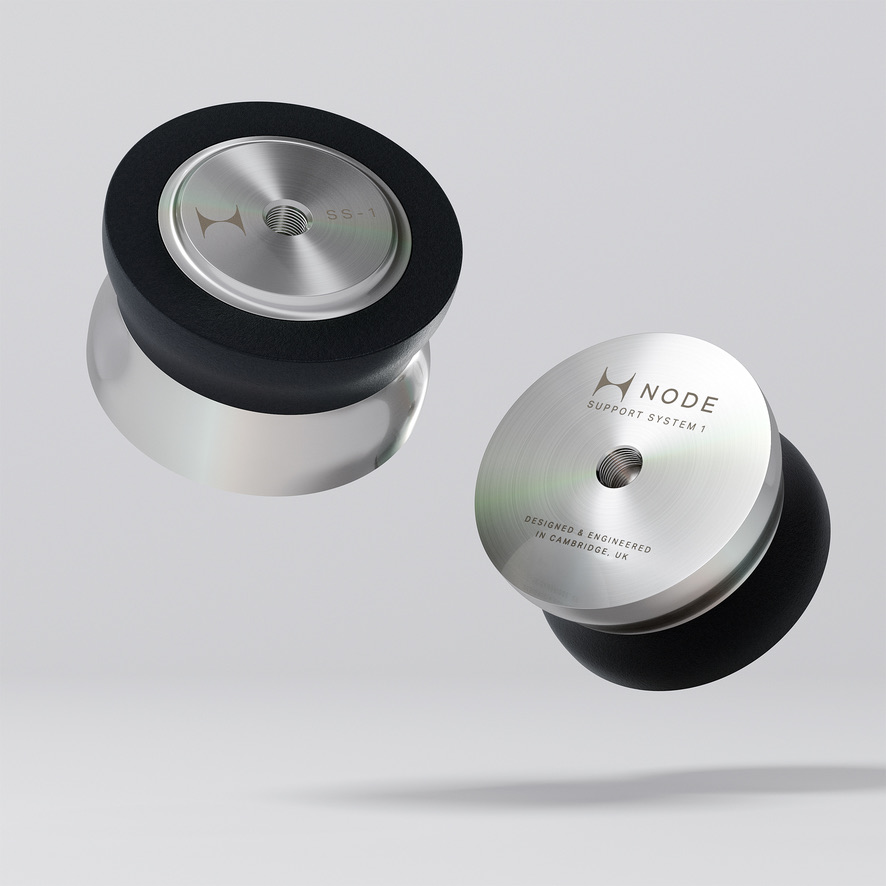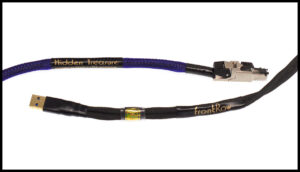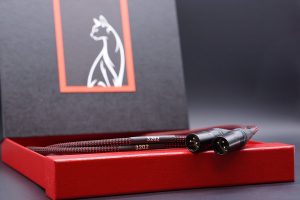I live on the fourteenth floor of an apartment building on a busy avenue in NYC. Even this high up with the windows closed, the sounds of the city—automobile horns, pulsating boom boxes, people arguing—filter in. It's annoying, especially when I'm having a session. Unexpectedly, though, I found it sets up a good test. If it's hard to tell whether a sound is coming from the street or from the speakers—in other words, if what's outside sounds like it could be inside—you know the system has realistic tone.
Golden Age Sonics
Normally, I have to tweak to get that equivalence, but that wasn't the case when the S1 Music Server from XACT was in line, demonstrating strong evidence for the machine's essentially correct voicing. It has what I call big tone—a highlight characteristic so obvious you can't miss it—along with a lively midrange, warmth, bloom, and liquidity. With these characteristics, the S1 inspired thoughts of the Golden Age of Stereo, that high-water period in tube analog recordings dating from sixty years ago.
New Wires from XACT
The S1 is the first music server from XACT, a new company based in Wrocław, Poland, from Marcin Ostapowicz, the founder of JPLAY (software) and JCAT (hardware). At this year's Munich Show the company unveiled a bunch of new gear, among them a line of reference cables. JCAT already retails cables; the XACT Phantom USB and LAN cables aspire higher in performance and price ($3750/1.2m). I received one of each type of Phantom to audition with the S1 server already in house.
As expected, the Phantoms carried over the S1's voicing. To the extent their attributes overlapped, I'll begin by describing the performance of the S1 then note how the cables interacted with it, plus discuss new developments they bring.
Network Setup
I cued up Ray Charles Place, from the album Duke Ellington Meets Coleman Hawkins. (Impulse! A-26, recorded in 1962 at Van Gelder Studio). The DSD 64 file was played from the S1's included 4TB SSD. In my system the sound from local files handily surpassed streaming from Qobuz so that was used for all music selections. There is much debate about this online. Marcin explained how the quality of your network directly correlates to results. A better switch, linear power supply, LAN and USB cables, etc.—every upgrade to network components will improve signal reliability for streaming and sound quality for both streaming and local files. Why it impacts local files is perplexing, because WiFi for local files is only used for control information from the app; it is not transmitting any music-related data. Nevertheless, my results confirm this, even if I have never heard a good explanation.
My modem from the local internet service provider (Verizon) is similar to what most consumers have. The switch and other components have been upgraded to high-quality audiophile parts. But if I acquired the S1—or any high-end server—I would definitely look into more robust bandwidth and a new modem to extract the full potential of this source.
The Snappy Transient
If you like the bold, saturated tone and musical voicing of the XACT S1, you're going to enjoy the Phantom cables. The bass is meaty; the images have bulk; bloom and liquidity are enhanced. Right away you'll notice the horns hit with bite and snap, which is welcome, as the S1's leading edge is slightly soft. Some cables create false excitement by letting the treble arrive slightly early. That's not the way to do it! Others have misalignment in other frequencies, introducing softness and blur. Both mess up coherency, i.e. the arrival times of frequencies are not synchronized.
The Phantom's leading edge is close to the ideal square shape—at least that's what I imagine a lab report would show. It's not only the transient; you can hear how the Phantoms are frequency coherent throughout the life of the note. This elevates the performance: entrances and exits are clearly demarcated; instruments are more in tune; the musicians sound more skillful; and the group ensemble more precise. When you install a coherent cable, listeners often note the music makes more sense. It can sometimes sound like a different recording.
2D Becomes 3D - Sound Columns
Digital front-ends have well-known issues with the third dimension. While they're good at layering images in rows front to back—they get the layered depth—where they falter is the individual instruments appear flat, like cardboard cutouts on a game board. The S1 departs from the pack. It is exceedingly good at fleshing out individual 3D space. In addition, this iconoclastic machine projects images out from the plane of the speakers and into the room. I've never met a digital front-end with this highly entertaining capacity before.
The Phantoms make the images stand up tall upon that foundation, so they resemble a vertical column of sound. Recall how a typical digital source throws the soundstage. The images are small point sources lined up about mid-height, have little vertical extension or depth, and seem to float because they're not grounded to the earth. The Phantoms bring what I call soft topographical precision: locations are specific, but not rigid nor shakey.
I pulled up another Golden Age album from the Impulse! catalog, John Coltrane and Johnny Hartman (Impulse! A-40, DSD 64, recorded at Van Gelder Studio in 1963). They Say it's Wonderful sounds wonderful; it is hard to imagine it being surpassed. This is a recording for the ages.
Hartman's baritone is lush and throaty. The way he lingers over each syllable, caressing it with a little vibrato here, perhaps morphing to a blue note, or shifting from his chest to a breathy throat voice, all contribute shades of expression. He's never content to simply hit the right note and let it go. The vocal line is always in flux and carries so much emotion, it gives me goosebumps. (Johnny didn't always put songs over in this manner. On All Of Me, an LP he made for the Bethlehem label in 1956, his delivery was straight up, lacking these embellishments.) John Coltrane's saxophone solos are a splatter of tone colors and shifting dynamics, mostly played soft, as befits a ballad. The sax's phrases magically rise to the same emotional intensity.
The XACT S1 excels at pulling out these luscious details and conveying the emotional experience. The Phantoms magnify the intensity and give inner voices full expression. We have all heard the adage music lives in the midrange, and that is the Phantoms favorite band (just like the S1). Secondly, they handle dynamics in a similar fashion. Many cable manufacturers focus on macro expression, making wires that jump quickly from piano to forte. In the extreme examples, they seem to have only two dynamic modes—soft or loud. This sounds exciting in an attention-grabbing way, but underrepresents (or entirely misses) the kind of subtleties we're talking about. Third, where digital has a reputation for being stingy with timbre, that cannot be said of the Phantoms. The quality of dynamic transitions is also first class; smooth and stepless, the increments are undetectable.
Escape from Audiophile Sound
In all of these ways, it is evident the Phantoms refuse to exaggerate. They don't employ excessive edge contrast to create sharp image outlines; they don't overwhelm you with a wall of detail to make you think, "Man, that's a lot of information to take in." The details are there should you choose to get them, not forcibly thrust at you. The difference is in the unforced, natural presentation. They do not call attention to any aspect of the performance, always making sure the emotional connection to the music comes first.
Materials Count
In the broadest sense, this hobby is about choice of materials and circuit design. The audiophile quickly learns that everything has a sound—except the objectivist hold outs, who don't agree that these things make a difference, especially concerning ethernet and USB cables. Maybe they've studied the subject and the textbooks say it shouldn't matter. Fair enough, as far as that goes. But how about the evidence presented by your ears? My admittedly extreme take is, if you are curifous and want to build up your understanding of materials, fine. But, in the end, all that matters is the sound.
Design and Construction
From the website:
Handcrafted with painstaking attention to detail, each cable takes over 7 hours to produce, utilizing high-purity copper conductors and custom connectors. Our proprietary designs include precise mechanical and impedance pairing of conductors and an innovative twisting technique. This meticulous construction is key to eliminating interference and preserving the purity of the audio signal.
The XACT PHANTOM™ USB cable features custom-designed aluminum connectors, engineered to provide a secure and stable connection.
The PHANTOM™ LAN Cable is equipped with the world's best RJ45 connectors—MFP8 IE GOLD from Japan's Telegartner.
Cosmetics and Build Quality
Excluding the connectors, the USB and ethernet cables appear similar, with a black mesh outer covering. While the USB is slightly slimmer and very flexible, the ethernet is larger and somewhat stiff. The ethernet connector housings are gold plated; the USB are black machined aluminum. There is a black machined aluminum slider ring at one end of the cable. For the LAN cable, the end with the slider should connect to the streamer. (I made it a practice to do that for both cables.) Build quality meets expectations at this price point. The main burn-in requires 150 hours. Another 50 hours yields subtle improvements.
Conclusion
Not to dwell on the point excessively, but the descriptors that come to mind for these XACT products do not align with current audiophile taste. The S1 Music Server's voice recalled the Golden Age sonics when stereo was commercially released, with a rich midrange, plenty of body, warmth, bloom, and liquidity. The new Phantom line of USB and LAN cables from XACT share that musical profile, plus add well-shaped transients, excellent frequency coherency, and the ability to resolve deeply into musical matters.
One of the S1's highlights is how it develops space and atmosphere in a way that brings the musicians together in the same time continuum, so they appear to be interacting on stage like they would at a performance. The Phantoms enhance that with additional presence and immediacy. When you pair them, a heightened illusion of flesh and blood musicians on stage appears in your listening room.
When I reviewed the S1 server I got the impression that the XACT design team has something different to say. The Phantom cables reinforce it. It might be the XACT products forecast the next wave in audiophile taste. I can't wait to hear what else they have coming down the pike.
XACT Phantom USB cable
Retail: $3750/1.2m. Add $750/.5m
XACT Phantom Ethernet cable
Retail: $3750/1.2m. Add $750/.5m
XACT
Distributor
Aaudio Imports




